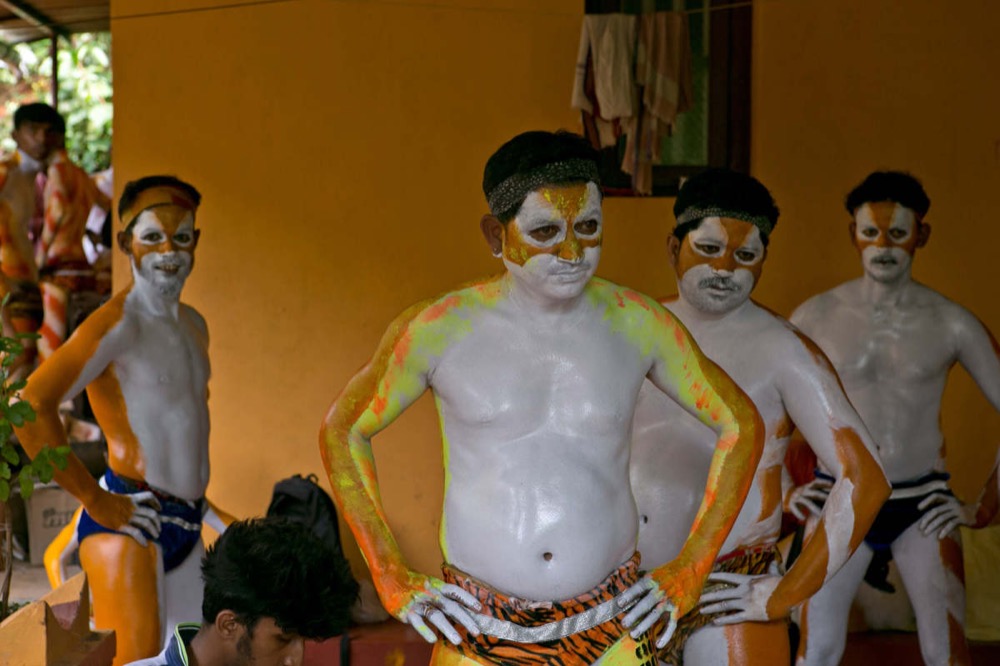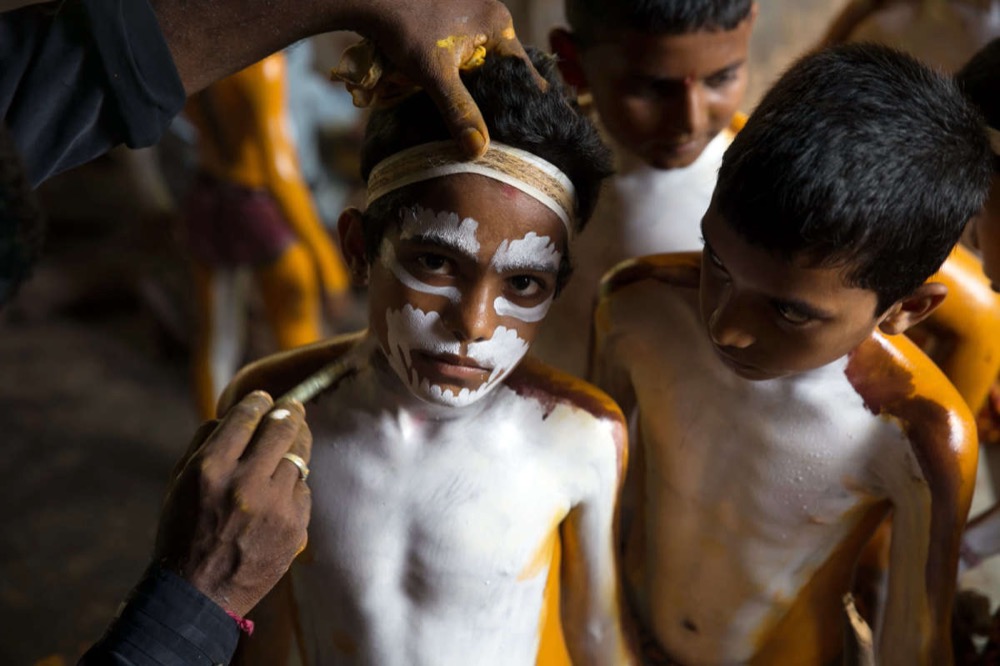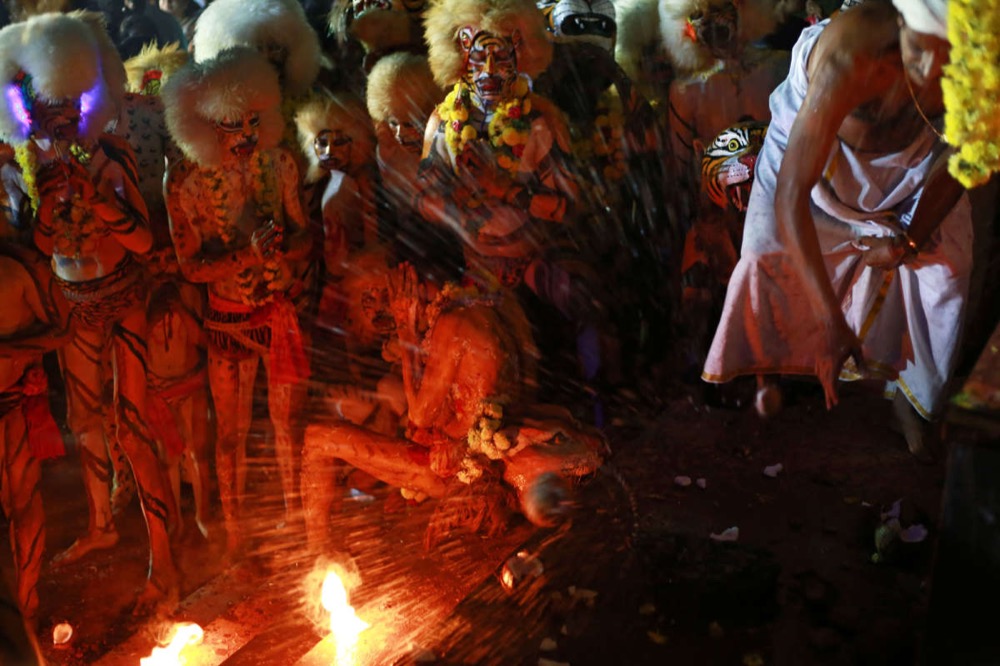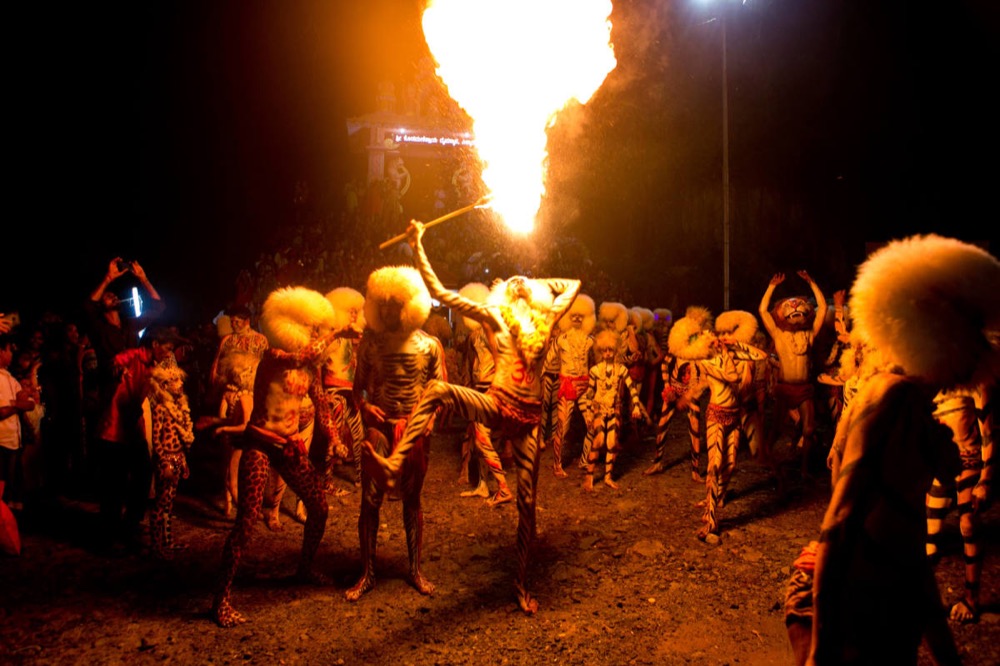On the outskirts of the port city of Mangalore in Dakshin Kannada, Karnataka, India, a troupe of men get ready to paint themselves in vibrant oranges, yellows, and whites. It takes about 12 hours for their transformation to be complete, and what emerges from that little hamlet is a strange pride of upright tigers, ready to prowl the streets as a form of worship, and penance.
ADVERT: Want a true taste of the Punjab? Visit ‘Fanoosh’ on Street Lane, Leeds
This is the folk dance of Hulivesha, which literally translates to ‘tiger mask’, explored and photographed by Pradeep KS, a photographer, based in Bangalore. Pradeep grew up with a deep interest in the folk art and dances of Karnataka, and so, when he chanced upon the Hulivesha during a visit to Mangalore, it was only natural for him to want to know more about this unusual form of folk art.
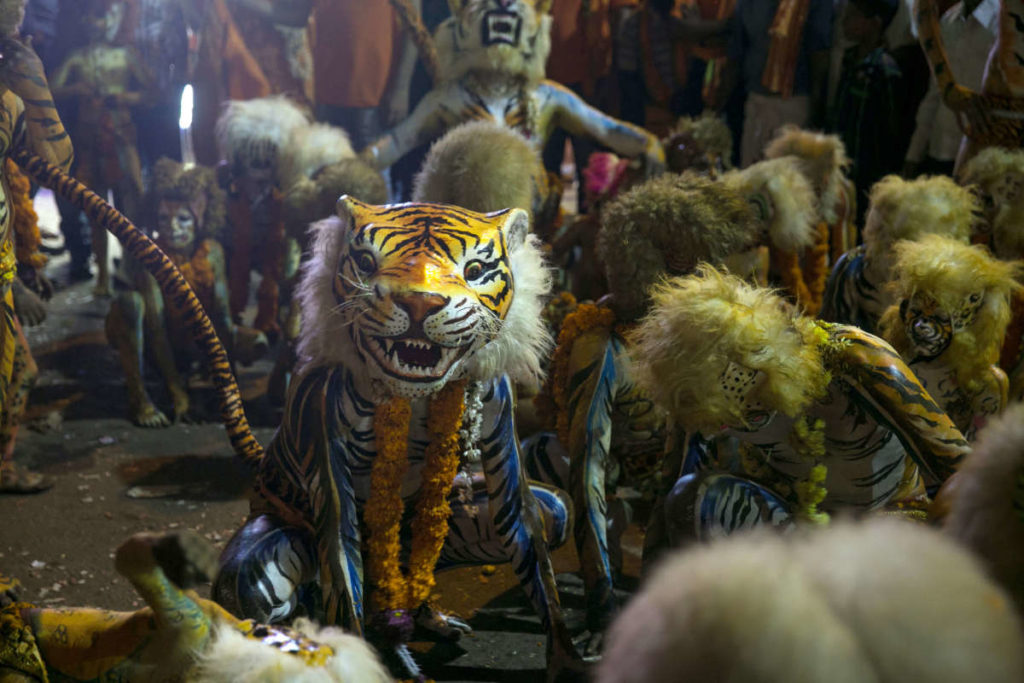
Curiosity led him on a journey that spanned five years and included repeated visits, and a lasting friendship with the Gopala Krishna Bhajana Mandali, one of the oldest troupes to perform the Hulivesha. With the Mandali, which translates to company or troupe, he gradually learned that there is a specific process, as well as many meanings attached to the ritual of being transformed into a painted tiger.
Indian folklore and Hindu mythology are incomplete without their animal actors. Be it through fables, or through sacred texts, animals have been long revered and used as conduits to further messages and teachings, as well as used to represent certain values.
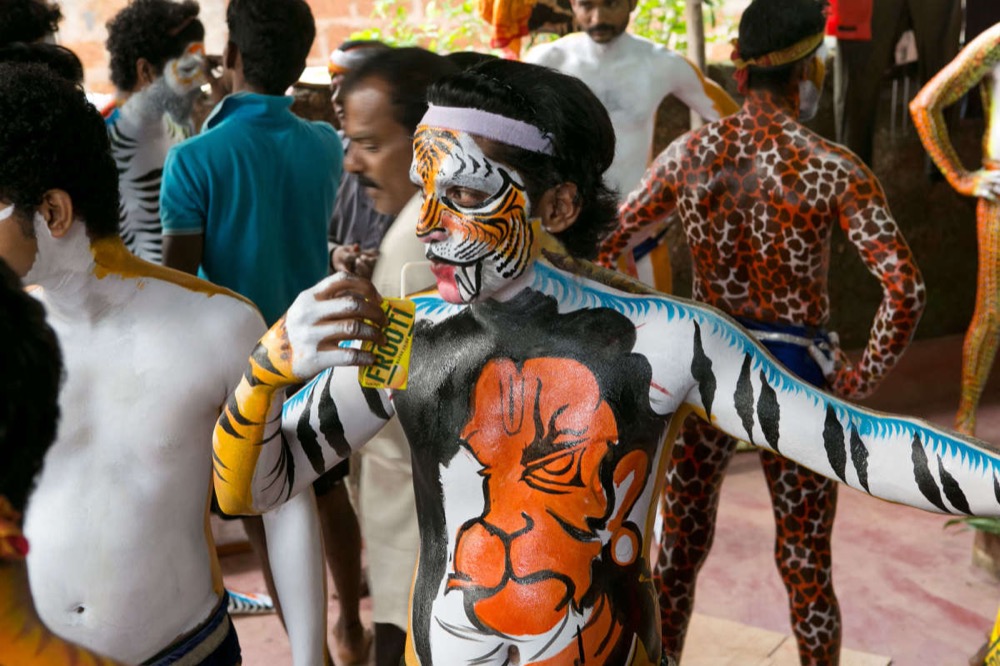
“Usually, the participants have made a wish that has been fulfilled, such as the recovery of an ailing child.”
One such animal of note in India is the tiger. A symbol of unlimited power, passion and strength, the tiger is revered as well as feared. One of the reasons for this reverence is because the tiger is the ‘vahana’ or divine vehicle and mount for the Hindu Goddess Durga, a fierce, protective, mother goddess of war and retribution. Durga is worshipped during the nine nights of Navratri in October, culminating in the grand tenth day celebration, or Dusshera, the occasion on which Hulivesha is ritually performed.
Sometimes also seen mounted upon a lion, Durga finds distant echoes in Ishtar, the Mesopotamian goddess of War, and Sekhmet, the Egyptian warrior goddess, both depicted with lions as their steeds or familiars. In India, specifically, the tiger and the lion are considered as being supreme of all animals. And so, the tamed tiger beneath the goddess Durga is representative of harnessed power, as well as mastery over evil, lust, greed and other excesses.
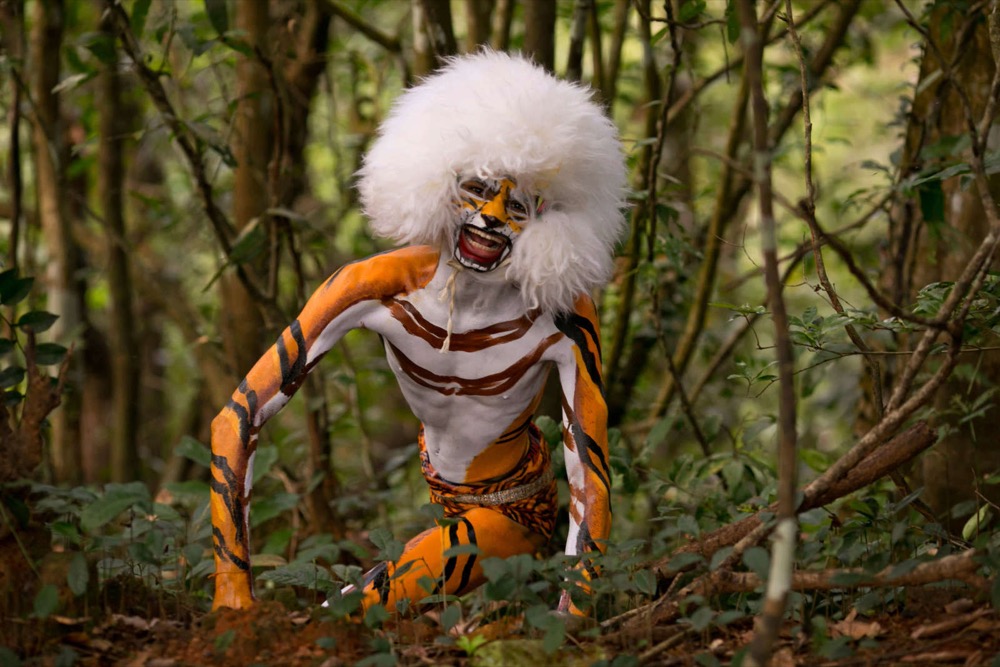
It is during the festivals of Dussehra and Gopalashtami (the birth of the cowherd God, Krishna), that Durga’s tiger seems to acquire a life of its own. It is made corporeal by the various troupes of veshadharis or masqueraders who prowl the streets in processions through the temple town of Kateel that lead up to the Durga Parmeshwari temple, situated on an islet in the middle of the sacred river, Nandini.
The first time Pradeep visited Kateel, it took him some time to locate a troupe. “I was about to take the bus back, when someone pointed me in the direction of the Gopalkrishna Bhajan Mandali. By the time I reached the troupe’s headquarters, the men had finished being painted, and the procession was about to begin,” he says. So, Pradeep stayed to simply soak in the atmosphere and decided to return the following year.
“They bring an offering of a coconut, which is presented to Lord Krishna.”
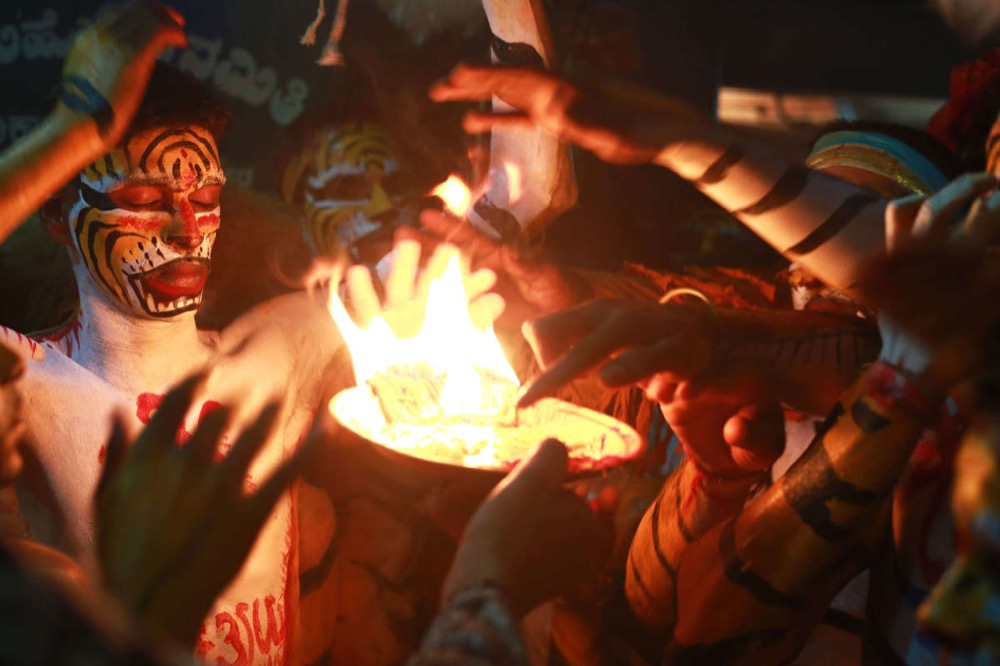
Over consecutive visits, Pradeep learned that the painting itself is a laborious process, and there are rituals to be followed before the dance begins. “Not just anyone can participate in the Hulivesha. Usually, it is the men who have made a wish that has been fulfilled, such as the recovery of an ailing son, the marriage of a child, elimination of financial troubles, and so on. They come to offer themselves as veshadharis besides experienced members of the troupe. They bring an offering of a coconut, which is presented to Lord Krishna, after whom the troupe is named. Then, all the elders of the village get together in the temple for a puja (a prayer) over the masks. The head of the troupe then anoints each of the men with a stripe of yellow paint on the arms, so as to formally begin the painting process.”
“While 30-40 dancers queue up, the painter, like his father before him, and his grandfather before him, begins with the colour yellow, then white. It takes a couple of hours for the initial coats to dry, and then finally, the glistening black stripes are painted on. The eyes are left for the end, along with finishing touches. Then, it is time to wait, as the paint takes a long time to dry. The men stand with their arms balanced upon poles or on a line strung across the room, so as to not let them touch their bodies. They also dust themselves with talcum powder to minimise the stickiness.”
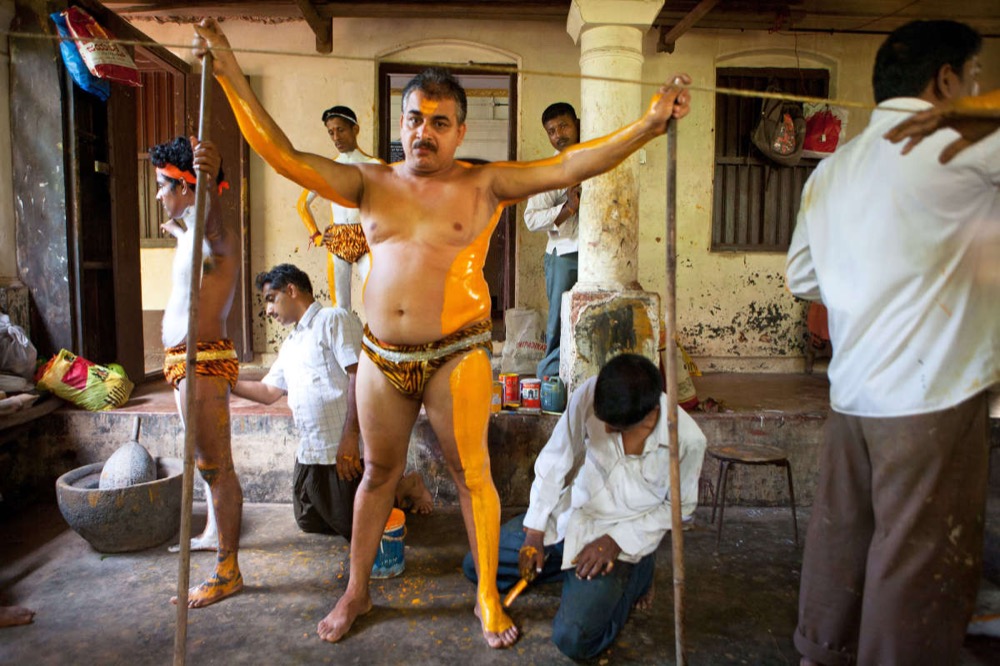
Long ago, the paints for Hulivesha were made using the roots of trees, but today, the men use oil paints, which are sticky, and cause irritation and itching, sometimes days after the festival. “The men tolerate the discomfort because they revere the spirit of the tiger and the festival, and believe that some discomfort once a year is worth it,” Pradeep says. “These days, they even use distemper paint, which is normally used to paint walls, because it is relatively easier to take off.”
Once their transformation as veshadharis is complete, the men often paint pictures of gods, or even slogans such as ‘Save the Environment’, and other social messages, on their bellies.
The dancers then set out with the drummers who give them a tempo, and energise them. Sometimes, as Pradeep describes, the veshadharis will stop buses and perform inside them for donations, but largely, they perform on the street, and are given money by onlookers. Some of this money goes into funding painting supplies, while the rest goes to the temple. As the dancers near the temple, their performances become more extravagant, with some of them breathing fire, and others performing acrobatics. With the last few hundred meters left to go, they drop down on all fours and prowl like tigers, while onlookers cheer them on, and the drums beat to a crescendo.
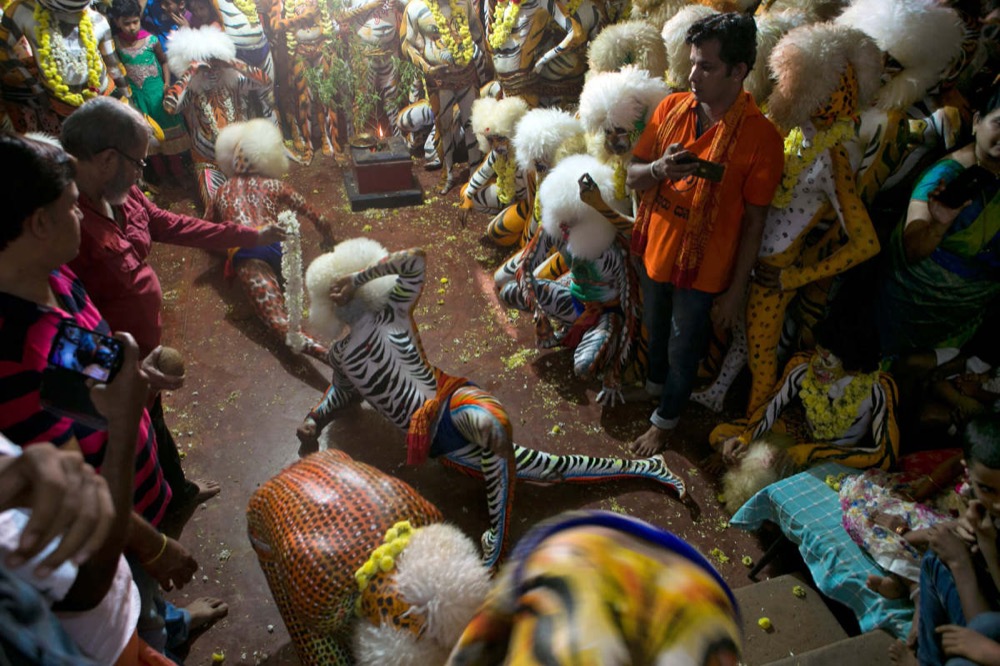
While the festival has its roots in praying for a better harvest, worshipping the forces of nature, and in humans as guardians and protectors of the natural world, the present-day Hulivesha is more pageantry than conservation. In a country where the tiger population seems to be slowly edging itself out of endangerment and extinction, Hulivesha can be a powerful medium that sensitises and educates. However, for now, the tiger stalks the grasses alone, while its upright incarnations dance to the beat of madding drums, in lieu of wishes fulfilled.
Pradeep, who has seen the dancers grow and evolve over the last five years, feels like he has a few more aspects of the festival he’d like to explore, but then he’s simply going to return for the spectacle. Will he ever participate in the Hulivesha himself? “No, no,” he laughs, “I will just be a spectator.”
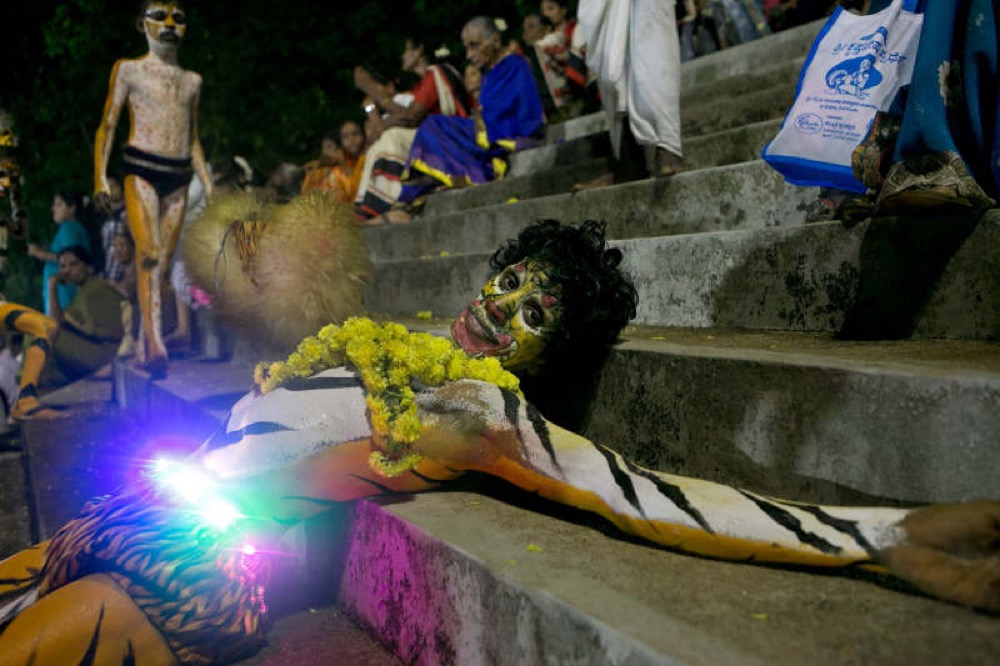
ADVERT: Want a true taste of the Punjab? Visit ‘Fanoosh’ on Street Lane, Leeds


